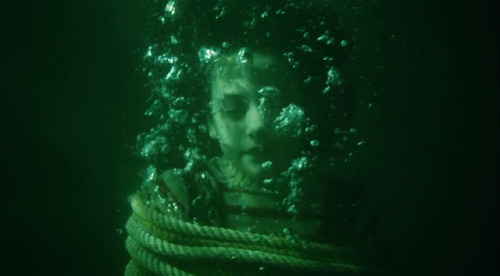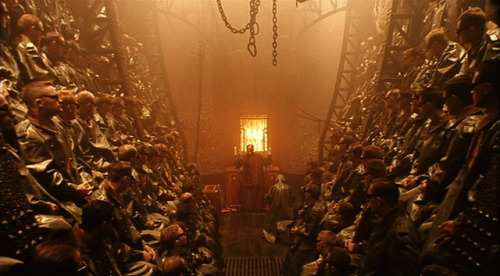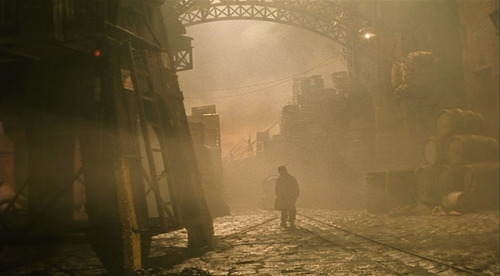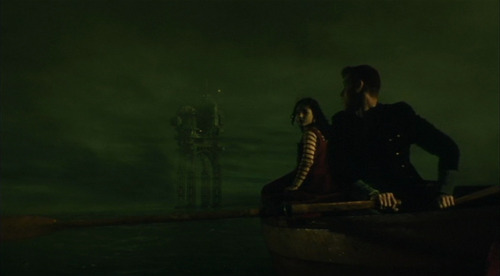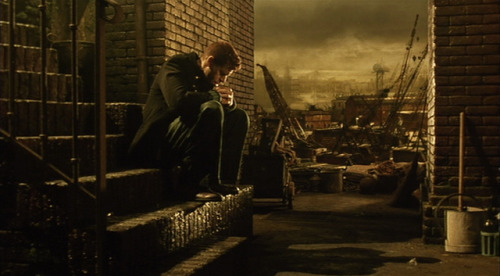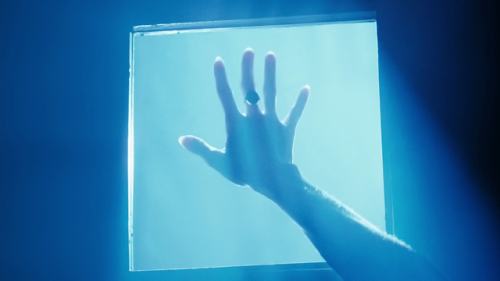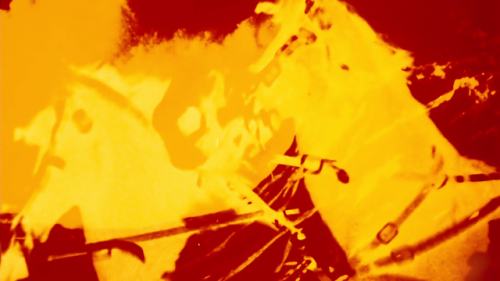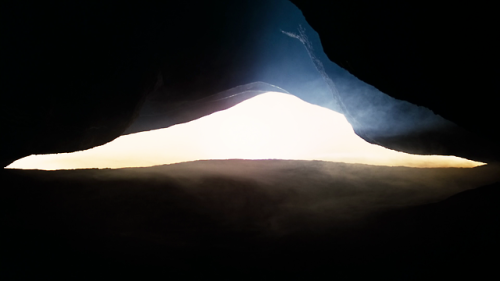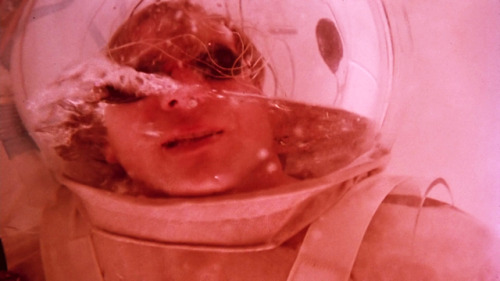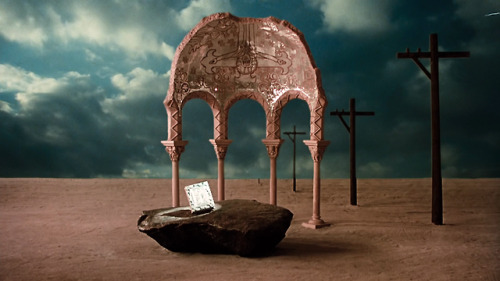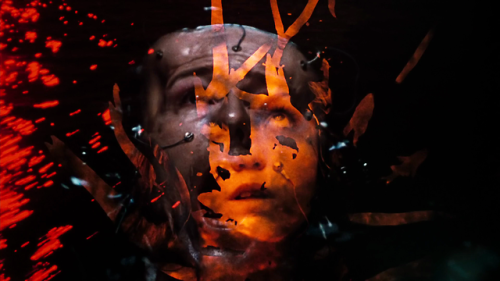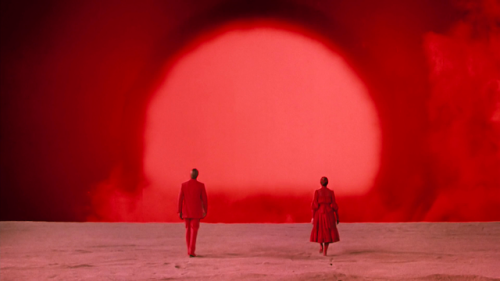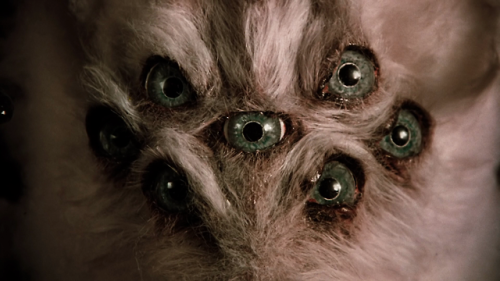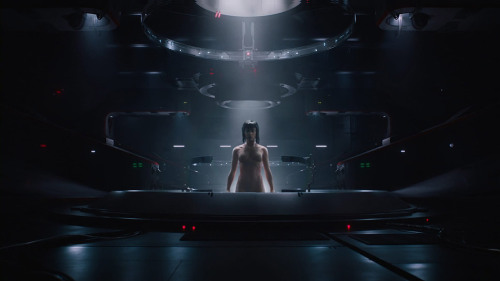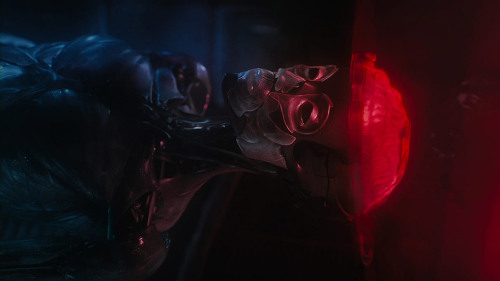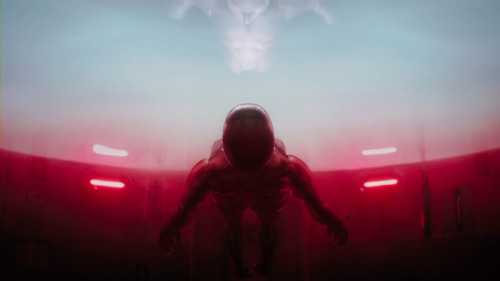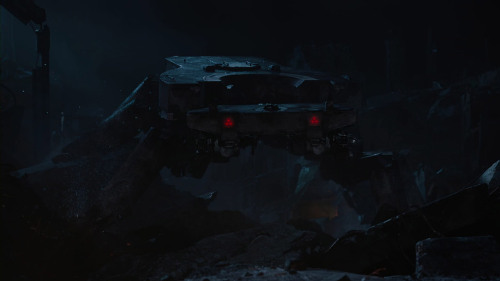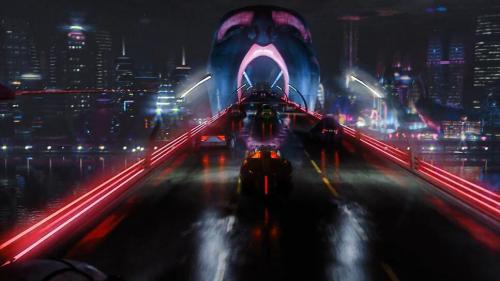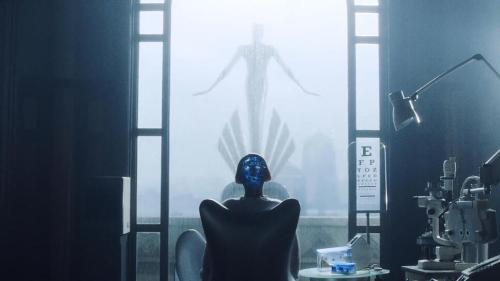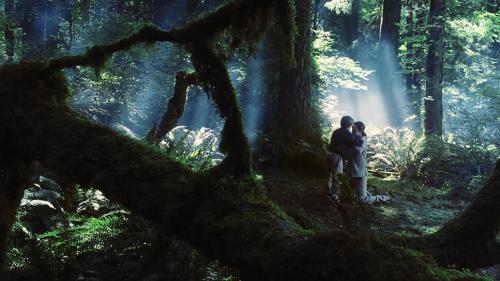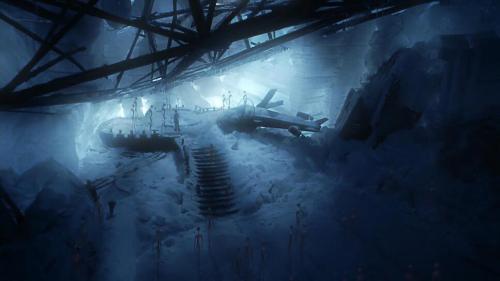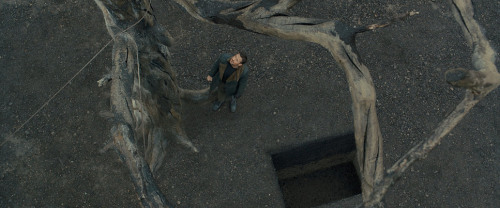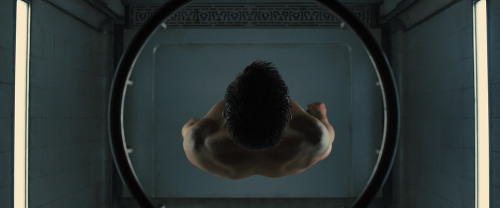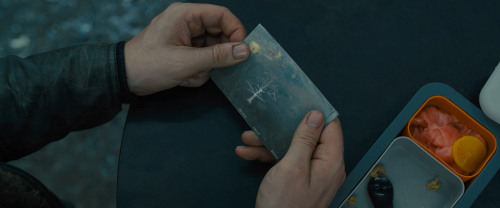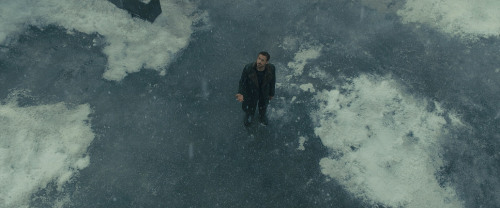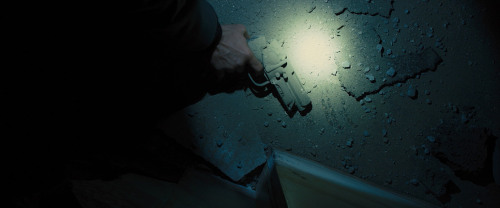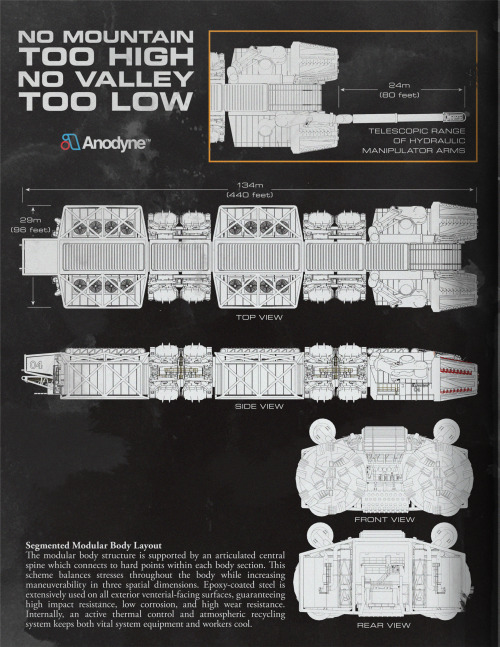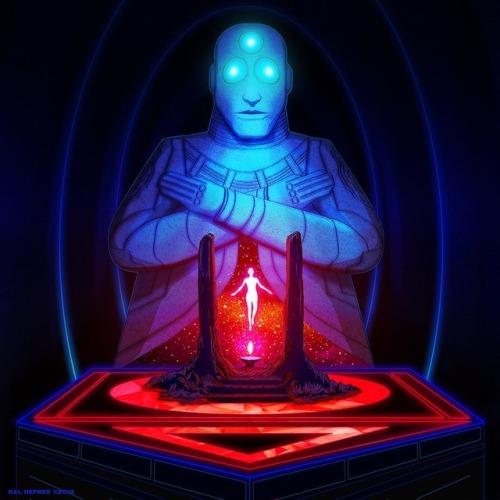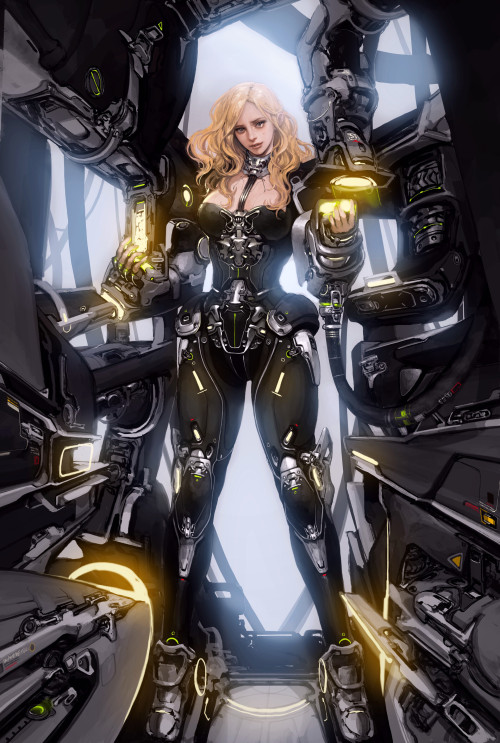#science fiction
City of Lost Children (1995) directed by Jean-Pierre Jeunet
Directed by Marc Caro & Jean-Pierre Jeunet
Cinematography : Darius Khondji, Eric Caro and Philippe LeSourd
Post link
GHOST IN THE SHELL (2017) - Dark blue and bright red
DIRECTOR: Rupert Sanders
CINEMATOGRAPHER: Jess Hall
Post link
GHOST IN THE SHELL (2017) - Dark blue and bright red
DIRECTOR: Rupert Sanders
CINEMATOGRAPHER: Jess Hall
Post link
A.I. ARTIFICIAL INTELLIGENCE (2001) - Visual world
DIRECTOR: Steven Spielberg
CINEMATOGRAPHER: Janusz Kaminski
PRODUCTION DESIGNER: Rick Carter
Post link
A.I. ARTIFICIAL INTELLIGENCE (2001) - Visual world
DIRECTOR: Steven Spielberg
CINEMATOGRAPHER: Janusz Kaminski
PRODUCTION DESIGNER: Rick Carter
Post link



Ringed Planet

Final Incident Investigation Report
Prepared in cooperation with the U.S. Department of the Interior, the National Park Service, and the U.S. Geological Survey
U.S. Commission on Geobiological Resources & Public Safety
U.S. Geological Survey
U.S. Department of the Interior
National Park Service
The U.S. Commission on Geobiological Resources & Public Safety (CGR) is an independent Federal agency whose mission is to ensure the safety of workers, the public, and the environment by investigating and preventing accidents relating to the Permian Basin Superorganism. The CGR is a scientific investigative organization; it is not an enforcement or regulatory body. Established by the Special Resources Development Act of 1980, the CGR is responsible for determining the root and contributing causes of accidents, issuing safety recommendations, studying geobiological safety issues, and evaluating the effectiveness of other government agencies and private enterprises involved with the Permian Basin Superorganism.
No part of the conclusions, findings, or recommendations of the CGR relating to any accident may be admitted as evidence or used in any action or suit for damages. See 42U.S.C. 7412®(6)(G). The CGR makes public its actions and decisions through investigation reports, summary reports, safety bulletins, safety recommendations, case studies, incident digests, special technical publications, and statistical reviews.
Any use of trade, firm, or product names is for descriptive purposes only and does not imply endorsement by the U.S. Government.
U.S. Commission on Geobiological Resources & Public Safety
Office of Congressional, Public, and Board Affairs
2175 K Street NW
Washington, DC 20037-1848
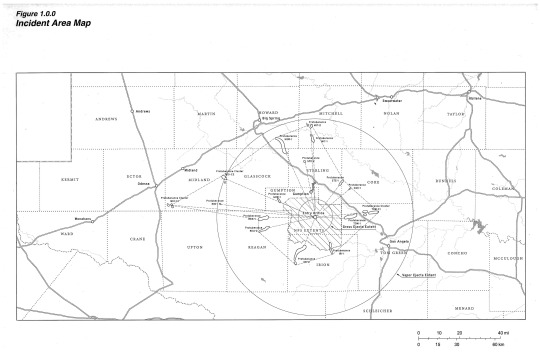
[1.0.0] Executive Summary
At 9:41 PM CST on July 4th, 2007, the Permian Basin Superorganism Natural Preserve (known colloquially as the “Mystery Flesh Pit National Park”) experienced a catastrophic disaster which resulted in over 750 fatalities, and over 1,800 major injuries. In the weeks following the incident, approximately 18,000 individuals from the surrounding communities sought medical and psychological treatment for ailments including breathing problems, chest pains, shortness of breath, nausea, birth defects, hallucinations, depression, anxiety, internal bleeding, sore throat, and headaches as a direct result of contact with gastric ejecta which had been introduced to the atmosphere.
Investigators have concluded that this disaster was chiefly characterized by a premature geobiological consumption event caused by the catastrophic failure of critical park infrastructure to constrain and limit the gastric, motor and neurological actions of the Permian Basin Superorganism.
Investigators have concluded that the failure of these critical safety measures are the direct result of negligent practices by the primary site operations contractor Anodyne Deep Earth Mining, a subsidiary of Anodyne, Inc.
The U.S. Commission on Geobiological Resources & Public Safety (CGR) released its first report on the Permian Basin Superorganism Disaster in August 2007 (“the Interim Report”), which highlighted technical findings and safety system deficiencies. The report issued recommendations to Anodyne, Inc.; the city of Gumption, Texas; the State of Texas; the U.S. Department of the Interior; the U.S. Environmental Protection Agency; the Federal Emergency Management Agency; the U.S. Food & Drug Administration; and the U.S. Department of Energy. As of April 2008, these groups have made progress in implementing the recommendations to improve the regulatory requirements for geobiological resource extraction, geobiological resource containment, and general public safety as it relates to the Permian Basin Superorganism.
[2.1.0] Anodyne Background
Anodyne was originally founded as the Anchor Mineral Co. in 1923. In 1958, the Anchor Mineral Co. merged with Dynamic Equipment, LLC. to form a new company known as Anodyne Deep Earth Mining, later changed to Anodyne.
Headquartered in Arlington, Texas, and prior to it’s 2008 restructuring, Anodyne Corporation was the twenty-third largest American company by revenue. Globally, Anodyne employed over 28,000 people. It operated seven major research, development and production facilities around the world, six of which were in the United States.
Anodyne filed for bankruptcy in late 2008, but ended it’s bankruptcy in February 2009 pursuant to a court-approved plan of reorganization. A new board of directors changed the name of Anodyne to the Permian Basin Recovery & Superorganism Containment Corporation, and emphasized reorganizing and liquidating certain operations and assets of the pre-bankruptcy Anodyne.
[2.2.0] Permian Basin Superorganism Background
The Permian Basin Superorganism (Immanis Colosseus, also known by the popular nomenclature of “Mystery Flesh Pit”) is a subterranean organism unique to modern biology, being the sole occupant of the PhylumImmanemqa. The organism was discovered by a pilot well drilling crew in 1973; later efforts were made to expose more of the organism through drilling and surface mining explosives.
The superorganism is chiefly characterized by its immense size, which is still a matter of geobiological debate. Surveys suggest that the organism may span many hundreds of miles beneath the permian basin horizontally, with scientists speculating that the organism may extend vertically into the upper mantle of the earth’s interior.
The complete anatomical layout and internal organization of the organism is unknown. Tissue samples suggest that the organism contains gastrointestinal, vascular, respiratory, musculoskeletal, nervous, limbic and integumentary systems with remarkable similarity to mammal life, while also containing a variety of systems which have no direct analog and are not fully understood. The feeding cycle of the organism is poorly understood and believed to occur on a complex and long-term schedule of dormancy and feeding activity. It has been hypothesized that the superorganism derives caloric energy from subterranean hydrocarbon deposits, though the organism has been observed to digest and absorb organic matter.
The depth at which the organism extends into the surrounding rock strata indicates that the organism is several hundred thousand years old. It is unknown what the natural lifespan of the species is, or if the Permian Basin Superorganism represents a mature or developing example of the species.
[3.0.0] Incident Timeline
Start of relevant timeline.
10:29 AM July 4th – Unseasonably high rains force park administrators to cancel a July 4th Concert and Fireworks display scheduled to take place on the surface park grounds. Many visitors who had already purchased tickets to the event become upset, and a decision is made to extend the park hours until midnight for those who had purchased event tickets.
8:00 PM July 4th – Normal closing time for the national park. A typical shift change of reduced night staff in the control room takes place.
9:16 PM July 4th – Harvesting crews working in the western extremities of the organism set a new extraction record to meet a quota for bonuses in time for the holiday weekend.
9:30 PM July 4th – Control room operators initiate a routine system self-test and discover a relay fault error resulting from increased electrical demand from mining equipment and tourist infrastructure. A control room operator logs the fault and notifies an on-duty engineer.
9:41 PM July 4th – Water drainage from surface rain into the Entry Orifice begins to collect in the sand gullet. Drainage pumps are automatically activated by a sensor system but fail to initialize due to the relay fault. An emergency back-up pump running on a separate emergency circuit is automatically activated.
9:42 PM July 4th – A critical alarm in the control room alerts operators that the emergency water pump has seized and is inoperative. Under-lubrication of the pump’s impeller bushings resulted in corrosion due to the moist interior of the flesh pit environment.
9:48 PM July 4th – Technicians arrive at the primary pump station to discover the sand gullet almost completely submerged. Water begins to pour over the dorsal respiratory ridge and into bronchial bulbules. Control room operators divert power to hydraulic stent rams to brace for expected choke response.
9:51 PM July 4th – Technicians a repair the relay fault as control staff reset the park’s electrical grid. The grid is offline for 45 seconds. The automatic PA system does not notify guests as the system is scheduled to automatically shut down at the normal 8:00PM closing time. The temporary lapse of lighting causes many guests to become panicked and return to the main gantry lift at the lower visitor center.
9:52 PM July 4th – A choking action from the organism begins 31 seconds into the electrical reset. The main dorsal trunk violently flexes. Lack of power to hydraulic arming rams causes irreparable damage to several sections of internal infrastructure.
9:53 PM July 4th – As the electrical system finishes the reboot cycle, the dynamic hydraulic actuators supporting the lower visitor center overcorrect for stability, not accounting for the shift in the wall lining of the nexial cavity in which the visitor center facility is anchored. Two of the six structural supports are torn from their foundations which causes the facility to list 20deg off vertical. The base joint of the vertical entry gantry is bent beyond its design limit angle.
9:54 PM July 4th – The Master Alarm is tripped automatically. Surface facilities are notified as response teams are given the order to mobilize.
9:56 PM July 4th – Park rangers are dispatched to rescue groups of visitors trapped in partially collapsed tunnels and trails.
10:03 PM July 4th – Continued movement of the organism, combined with rainwater, causes one of the upper entry gantry supports to slip. An outbound elevator conducts an emergency stop stranding over two dozen visitors.
10:05 PM July 4th - Tremors registered as far away as the DFW metroplex.
10:06 PM July 4th - Soil liquefaction destabilizes surface facilities in and around the organism. Dilation anchors begin retracting to keep the entry orifice open.
10:12 PM July 4th - A master fail-safe is activated by the automated park management system. Twenty thousand liters of aconitine compound are injected into the superorganism via a distributed network of relay stations located throughout it’s known internal anatomy.
10:12 PM July 4th - Tremors and convulsions intensify as the entry gantry connection to the lower visitor center detaches completely. The lower visitor center begins to collapse downward into the nexial cavity.
10:12 PM July 4th - Peristaltic muscle action of the nexial cavity begins to exert substantial pressure on the outer structure of the lower visitor center facility.
10:15 PM July 4th - The prime labiod junction just west of the Septum Falls geobiological feature flexes into an open position, releasing a torrent of lactogastric chyma into the dorsal trunk. It is likely that this was a reaction to the aconitine injection.
10:16 PM July 4th - Peristaltic spasms force the caustic chyma slurry through the nexial cavity and up through the lower and upper moisture crops towards the surface orifice.
10:16 PM July 4th - Many guests attempting to flee the stalled elevator near the entry orifice attempt climbing out the upper moisture crop but are ultimately unsuccessful due to torrential rains causing the surfaces to become very slippery. Many end up falling back into the maw.
10:17 PM July 4th - The chyma slurry erupts from the surface orifice in a geyser several hundred meters in height. Large pieces of undigested organic matter crush several vehicles and damage windows.
10:19 PM July 4th - Following the several minute long ejecta event, a deep and incredibly loud roar erupts from the entry orifice as ground tremors intensify further. Large extremities begin surfacing through bedrock and soil approx. 30km-120km from the entry orifice.
10:25 PM July 4th - The acrid smell of the gastric ejecta can be detected as far as Odessa, TX.
10:26 PM July 4th - Two park service vehicles and a tour vehicle containing park service employees and several guests attempt to ascend through the entry orifice tube.
10:27 PM July 4th - Peristaltic action crushes one of the tour vehicles and sucks the other two vehicles back into the nexial cavity and down into a digestive organ. These vehicles are presumed destroyed.
10:58 PM July 4th - The pentagon is given authorization from the whitehouse to use nuclear force if necessary to prevent the organism from entering an active and/or ambulatory state.
11:02 PM July 4th - The on-site operations director within the lower visitor center control room initiates a final fail-safe measure in the form of the [CONTINGENCY MEASURE].
11:02 PM July 4th - Master Event Log records successful spin-up of the [CONTINGENCY MEASURE].
11:05 PM July 4th - Lower visitor center structural integrity is critically compromised resulting in total collapse.
11:05 PM July 4th - Data connection with lower visitor center is severed.
11:13 PM July 4th - Spasms and motor action of the superorganism begins to noticeably subside. Response teams begin to descend into the surface orifice to attempt rescue operations.
11:19 PM July 4th - Response team encounters visitor group which had attempted escape from stalled elevator. Most are dead, the remainder are mortally wounded and partially digested due to caustic gastric ejecta.
11:42 PM July 4th - Radio contact established with ranger vehicle trapped within “Oyster’s Shame”. Due to ventricle closure, no feasible rescue strategy can be developed before complete mastication occurs.
11:56 PM July 4th - Response team confirms that [CONTINGENCY MEASURE] and associated facility are still intact and operating.
11:58 PM July 4th - Texas Gov. Rick Perry formally declares a state of emergency for Gumption county.
12:22 AM July 5th - Response teams route data/power umbilical to new basecamp in [CONTINGENCY MEASURE] facility.
12:35 AM July 5th - Three inter-pit lifeforms are identified as having been ejected onto the surface. Fifteen visitors are injured and seven are hunted by inter-pit lifeforms during panicked evacuation of surface resort.
12:41 AM July 5th - Park staff manage to kill the three large lifeforms.
1:02 AM July 5th - National Guard helicopters begin delivering supplies and personnel to aid in site containment.
1:58 AM July 5th - Field hospital is constructed to care for wounded visitors and staff.
2:37 AM July 5th - Initial damage surveys report catastrophic destruction of internal park infrastructure. Pit geobiology has dramatically changed in hazard level.
3:00 AM July 5th - Emergency teleconference of Anodyne executive leadership. National parks director and Secretary of the Interior are present.
3:12 AM July 5th - Executive decision is made to initiate FEMA response and assemble a task force for containing superorganism.
4:00 AM July 5th - Media helicopters and vehicles begin to report on the scope of disaster.
4:39 AM July 5th - Base camp technicians begin to spin-down [CONTINGENCY MEASURE]. Large fractures due to inertial stress have appeared on mineral components. Engineers advise against re-initializing [CONTINGENCY MEASURE] until mineral components can be replaced or repaired.
6:08 AM July 5th - Ground personnel begin assembling a pump system to inject industrial sedatives into the superorganism. Transport trucks containing industrial sedative arrive.
9:45 AM July 5th - Emergency teleconference of Anodyne shareholders.
11:20 AM July 5th - Several injured visitors inexplicably leave field hospital and begin walking towards open pit orifice. Approx. 38 individuals are able to crawl back into the orifice over the course of 8 hours. None are recovered.
3:51 PM July 5th - Radio transmission from trapped ranger vehicle ceases. Many speculate that other small groups of visitors and staff are still trapped.
End of relevant timeline.
[4.0.0] Final Investigation Report
The following Final Investigation Report addresses additional investigation findings not covered in the previous report, including analysis of (1) the Anodyne organization, emergency response, and safety culture; (2) industry disaster response standards; (3) structural integrity standards; and (4) effective performance of “mystic” contingency measures.
[4.1.0] Technical findings
This report highlights the following technical findings. (An in-depth discussion appears in the Interim Report)
[4.1.1]The electrical distribution scheme for the interior operations of the Permian Basin Superorganism Nature Preserve was modeled on a typical supply/load grid layout often found in mines, with power provided by a gas-fired plant located within the surface support compound. Unlike typical mining power distribution networks, the power load was split with the facilities involved in the tourism and natural preservation operations within the organism. This split-demand yielded a load fluctuating from 33kV to 60kV depending on a range of factors from resource extraction output, visitor throughput, hydrostatic and barometric fluctuations within the organism, and the ambient blood pressure of the organism. This unorthodox load distribution scheme required careful demand oversight and was subject to failure if operated outside of design load specifications. Such a failure occurred on July 4th, 2007 when operators increased electrical demand beyond design load specifications by both extending resource extraction operations while simultaneously increasing visitor throughput loads on trail infrastructures.
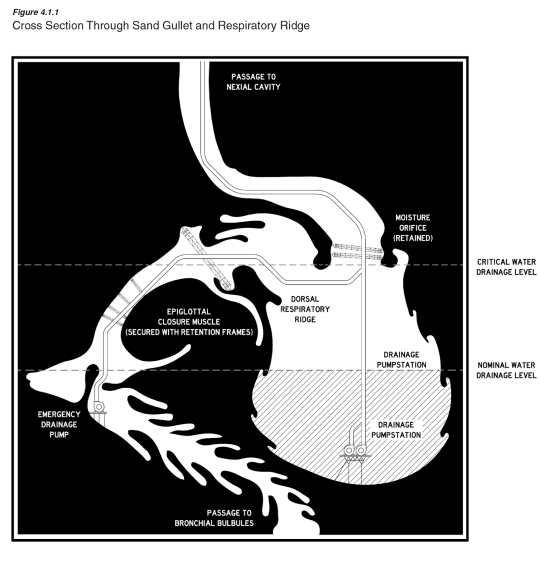
[4.1.2] Hydrochloric corrosion is common in geobiological resource extraction, where naturally occurring hydrochloric compounds react with steel equipment. Process variables that affect corrosion rates include the total hydrochloric content of the enzyme secretions, flow conditions, application of TUMS industrial organic corrosion inhibitor salve, and the system temperature and humidity. Virtually all geobiological operations equipment is subject to this type of corrosion, and requires routine inspections and preventative maintenance to ensure that metallic and non-metallic corrosion prone surfaces are operating at design strength. The investigation has concluded that the corrosion found within the primary impeller bushings within the Emergency Drainage Pumps was caused by Hydrochloric corrosion due to poor maintenance.
[4.1.3] Foundations and other anchor support structures within the Permian Basin Superorganism are critical components of park infrastructure which require careful planning and construction oversight. Under nominal conditions, anchor sites are selected by engineers to meet design load specifications with consultation from venteriobiologists for minimum anatomical disturbance. Rigid geobiological strata such as bone and dense cartilage are most often selected for load-bearing anchor points for their relative stability and similarity to conventional load-bearing strata such as rock. However, many locations within the Permian Basin Superorganism are primarily characterised by dense compositions of soft tissues requiring novel anchoring solutions. Several anchors within the primary entry tube utilize a cleat-based stent system which engages the entry tube muscle walls. These forces are equalized by the use of circular retention trusses which, when combined with vibration dampening actuators, form a rigid support assembly upon which fixed components such as the entry gantry may be affixed. Peristaltic action of a muscle tube has the potential to rotate a circular cleat sent frame by up to 90deg, eliminating the retaining capabilities of the frame. It is for this reason that design specification standards call for the installation of either rigid or tensile support members between consecutive retaining frames. In cases such as within the entry tube, tensile cables were selected to provide this support. These cables are subject to corrosion and must be routinely inspected in order to ensure that they meet minimum design load specifications. The investigation has concluded that the cables installed on the entry tube retaining frame system were improperly maintained and failed due to corrosive weakening of the cable members.
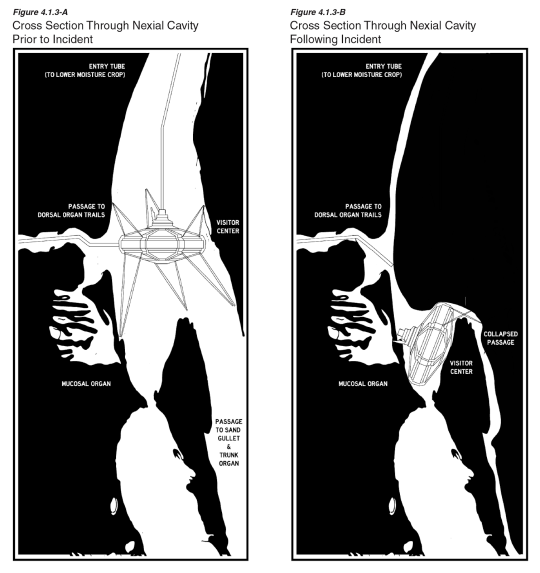
[4.1.4] The use of a previously-untested contingency measure by operators, while not the primary inciting incident of the disaster, is a prime contributor to the outstanding collateral damage. A network of sensor stations embedded throughout the Permian Basin Superorganism had acted as a distributed sensory system, intended by park planners to provide a method for observing large-scale changes to the organisms condition. As an experimental contingency measure, each station was outfitted with a mechanism capable of injecting up to 15L of a concentrated aconitine solution. Aconitine is commonly used as an acute toxin for large mammals such as whales and was chosen for its theoretical effectiveness on key muscle groups within the organism. Park planners were under the assumption that a rapid injection of large volumes of aconitine would act as a sedative agent without inducing tissue death beyond the immediate injection sites. The investigation has concluded that this injection failsafe was directly responsible for escalating the motor response of the organism to levels beyond the design load strength of critical park infrastructure. The investigation has also concluded that the aconotine injection failsafe was directly responsible for causing the toxic “shock” response within the organism which resulted in a Gastric Ejecta Event.

[4.1.5]The [CONTINGENCY MEASURE] is hypothesized to function by utilizing a series of standing harmonic and ultrasonic wavelengths which have been observed to affect the overall behavior of the Permian Basin Superorganism. These waves are created by applying a 15MHz mechanical percussion to the face of an excavated large quartz crystal (also known as “Mystic Artifacts #15, #21 and #22”). Once struck, the unique properties of the relic propagate the wave outward and into the surrounding anatomy of the Permian Basin Organism. When placed upon a rapidly rotating turntable, the effect can be multiplied and oriented allowing a high degree of theoretical influence over the organism. This contingency measure was activated only once and demonstrated the potential application this technology may have in future containment measures. However, at the time of this investigation, no additional relics have been located intact. Without this key assembly component, the CGR does not recommend additional experimental uses of the [CONTINGENCY MEASURE].
[4.2.0] Organizational Findings
[4.2.1] Anodyne did not effectively implement internal recommendations to help prevent structural failures to hydrochloric corrosion. In the 8 years prior to the incident, a small number of Anodyne personnel with knowledge and understanding of venteriobiology recommended on several occasions either a one-time inspection of every component within the primary inter-park infrastructure system - known as a 100 percent component inspection - or an upgrade of the material of construction of these key infrastructure components. The recommendations were not implemented effectively, and many key structural and mechanical components remained in service until failure on July 4th, 2007.
[4.2.2] Anodyne failed to perform internally recommended 100 percent component inspections. Anodyne metallurgists released a formal report dated September 30, 2004 (nearly 3 years before the incident), titled Updated Inspection Strategies for Preventing Hydrochloric Corrosion Failures in Critical Systems. The investigation has concluded that these recommendations were not properly implemented.
[4.2.3] The CGR identified several contributing causes of the July 5th, 2007, incident relating to the safety culture at Anodyne:
- Decision making that encourages continued operation of tourism and resource extraction operations despite hazardous working conditions.
- Reluctance among employees to use their Stop Work Authority. Recent safety culture surveys performed within resource extraction sites indicate that employees had become less willing to use their Stop Work Authority between 2003 and 2006; and
- Substandard equipment maintenance practices. Those same surveys indicate that Anodyne employees saw increased problems in how the internal operations infrastructure maintained its equipment between 2003 and 2006.
[4.2.4] Anodyne did not effectively identify in the Incident Command structure the damage mechanisms that could have caused the failures on the night of the incident. The OSHA Hazardous Operations and Emergency Response (HAZOPER) standard states that the Incident Commander “Shall identify, to the extent possible, all hazardous conditions present.” in an emergency response situation. However, the appropriate technical expertise necessary for identification was not effectively consulted in the Incident Command Structure on July 5th, 2007. This lack of knowledge of all potential causes of the incident led the Incident Commander to direct emergency responders to take actions that may have ultimately exacerbated the hazard condition and put many Park Service personnel, Anodyne personnel, as well as civilian visitors, in harm’s way. It also led the Incident Commander to limit the “hazard zone” to a small area that did not consider the possibility of a Gastric Ejecta Event. When the Gastric Ejecta Event occurred, personnel and emergency equipment positioned in the “safe zone” were engulfed in the volume of caustic ejecta.
[5.1.0] Incident Conclusions
[5.1.1] The CGR found that the failure of this incident is indicative of a fragmented hazard management approach that placed the responsibility to implement safety recommendations on stakeholders which stood to benefit from decreased oversight while also incurring financial loss for any safety oversight restrictions placed. Consequences of this cultural attitude surrounding the tourism and resource extraction operations within the Permian Basin Superorganism led to the severe underestimation of the capabilities of the organism as well as the capabilities of the systems designed to limit the hazards posed by the organism.
[5.1.2] The use of concentrated aconitine, without prior study or approval, as a fail-safe directly triggered a reactionary response from the organism which led to the deaths of over 750 individuals.
[5.1.3] The use of the [CONTINGENCY MEASURE], while effective at “pacifying” the organism, was similarly employed without prior substantial testing or approval. This lack of communication from Anodyne regarding the specifics, theory of operation, and even existence of the artifacts , which are essential components within the [CONTINGENCY MEASURE], directly led to the unsafe, high-RPM operation which fractured the mineral components of the [CONTINGENCY MEASURE].
[5.2.0] General Recommendations
[5.2.1] The CGR, with full support from the U.S. Department of the Interior, the U.S. Geological Survey, and the National Park Service, has made the discretionary recommendation to not pursue additional commercial development within or adjacent to the boundaries of the Permian Basin Superorganism.
[5.2.2] In the interest of continuing the present containment operations while also ensuring readiness in the event of a future geobiological action event, the CGR has developed a comprehensive program of monitoring and containment. This program is divided into a series of objectives, intended to better mitigate the hazard presented by the existence of the Permian Basin Superorganism.
[5.2.3] Improve the communication of geobiological-hazard science for use in decision and policy making.
- Support the use of geobiological-hazard science in risk reduction with engineering, environmental science, spiritual and social sciences.
- Improve understanding among venteriobiologists, engineers, and others of numerical simulation of organism ground activity as opposed to the use of empirical ground-motion-prediction equations.
- Improve understanding of the benefits of early warning systems.
- Educate about organism movement patterns and operational activity forecasts.
[5.2.4] Advance basic knowledge of geobiological action event hazards and inform actions to reduce the risk of the organism becoming non-dormant
- Develop a new method to estimate stimulus-response outcomes in interactions with the Permian Basin Superorganism without reliance on expert opinion, proprietary computer models, or wholly “mystic” ritual methods without demonstrated patterns of reliability.
- Educate and facilitate local containment capabilities to deal with fauna and other life forms which are native to the organism’s interior anatomy.
- Develop methods for production and administration of appropriate sedative measures to chemically induce a comatose state of inactivity in the organism.
- Where it is absolutely necessary for personnel to descend into the organism, develop methods to reduce the possibility of individuals becoming trapped.
- Establish a perimeter area surrounding the Incident Site to protect the health and safety of the public from additional fauna incursions or ejecta events.
[5.3.0] Containment Recommendations
[5.3.1] A thorough plan for containment of the organism has been devised by a joint containment task force comprised of geobiologists, venteriobiologists, seismologists, medical experts, engineers from various disciplines, land management specialists, ecclesiastical personnel, as well as representatives from private industry. This proposed containment procedure integrates a variety of strategies intended to prolong the dormancy of the Permian Basin Superorganism while simultaneously reducing the likelihood of a future geobiological action event.
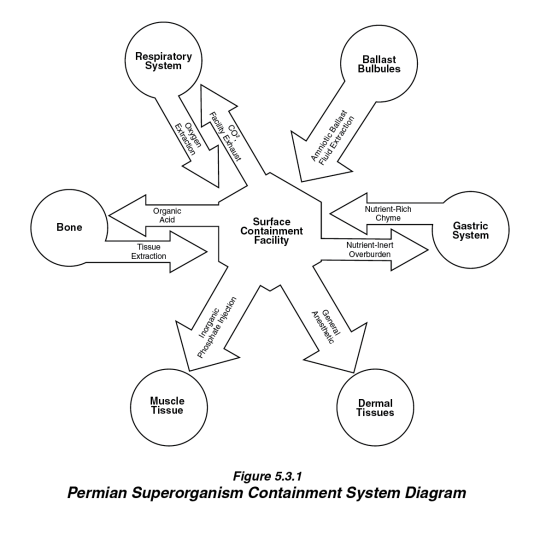
The taskforce has recommended the establishment of a >3km restricted access zone surrounding the Entry Orifice defined by a reinforced and patrolled barrier. Signs and other warning devices should be installed to clearly inform the public of the hazard(s) presented by the containment operations and the Superorganism itself. Where possible, the taskforce has recommended that any material necessary for the containment operations be produced on-site so as to minimize logistic dependency on remote facilities.

The recommended multi-strategy containment plan is outlined as follows:
- All efforts should be made to maintain a steady introduction of high-potency anesthetic to the uppermost dermal anatomy of the organism. This is the foremost measure for reducing the capability of the Superorganism to sense and perceive human activity.
- At a similar volume to high-potency anesthetics, the introduction of inorganic phosphates directly into the muscles of the Superorganism is an essential strategy designed to delay and fatigue the motor response of the organism.
- Where possible, the introduction of acidic compounds into bone structures will further weaken the overall response capability of the Superorganism in the event that other containment precautions fail. Special care should be taken to ensure that primary structural members of the organism’s skeletal system are not weakened, however, as such a measure could potentially damage critical infrastructure.
NOTE: As of rev. 18.3 of this document, the Permian Basin Recovery & Superorganism Containment Corporation has been granted a temporary permit for the continued extraction of bone material and amniotic fluid ballast for research and limited commercial purposes. - The taskforce has recommended measures which would induce a state of mild hypoxia in the Superorganism through the replacement of oxygen-rich air with carbon dioxide-rich air within the respiratory systems of the organism. In addition, by venting plant exhaust from the surface containment facility directly into the organism, this plan remains in compliance with standing EPA regulations on emissions within natural preserves.
- The extraction of nutrient-rich material from within the Superorganism’s gastric systems is an additional preventative step recommended by the task force to weaken the response capability of the organism. In order to prevent a hunger response, the task force has recommended displacing the volume of nutrient-rich material with that of an inert material such as gravel or rock.
NOTE:As of rev. 2.5 of this document, materials and objects harvested from the Retrocognitive Material Gestation Organs (A.K.A. “Gift Gardens”) will continue at a greatly reduced capacity for the exclusive purpose of research. All such objects shall be stored in a designated and secure off-site facility.
[6.0.0] Conclusion
The CGR concludes its recommendations and report with broad advocacy for any such program(s) which aim to better prepare physical as well as social and spiritual infrastructure for the inevitability of the Permian Basin Superorganism emerging from dormancy and becoming completely active and ambulatory. The measures and methods described within these recommendations are temporary in their effectiveness while representing the fullest extent of human capability to impact the Permian Basin Superorganism. Future studies and capabilities may yield a greater degree of readiness in matters concerning the survivability of a societal encounter with an active and ambulatory Immanis Colosseus, but it is unrealistic to believe that mankind will be able to seriously damage or eliminate such an organism.
Inhabitants of the western hemisphere, within the U.S. and Abroad, must come to understand the losses each and every one of us will face, and how those impacts will harm the quality of life we enjoy in this unique part of the world.
[End of Document]
This document represents an executive overview of the now-infamous July 2007 disaster which permanently closed the Mystery Flesh Pit National Park. Though the initial hazard and containment response was praised by many for it’s quick and decisive action, many have criticized the government for continuing to allow the Permian Basin Recovery & Superorganism Containment Corporation (Formerly Anodyne, Inc.) a commercial stake in the containment efforts.
More info about this project can be found at the subreddit /r/FleshPitNationalPark, the official Discord, or at the blog mysteryfleshpit.tumblr.com
This pamphlet would have been handed out to investors at one of the larger shareholder conventions held annually by the Anodyne Corporation as a way to bolster market confidence with the introduction of a (then) brand-new mining technology. The MMP-III Mobile Mining Platform, commonly referred to as simply “Mining Rigs”, were pivotal in the resource exploitation of the Mystery Flesh Pit. These massive machines represented the pinnacle of venterial technology and wrought untold havoc on all manner of inter-pit ecosystems. Sporting a price tag of well over 300 Million USD to construct (on-site of course, as they could not fit within an elevator), only 7 of these massive vehicles were built, with one of them famously destroyed during the 2007 disaster as it attempted to provide escort/rescue to a trapped caravan of tour vehicles. Today, it’s suspected that there are at least one or two of these machines still around, though their exact whereabouts remain unknown.
Post link
This is some concept art for a solarpunk series I’m working on right now and this is how you experience a music video in the future.
Post link
“Wake up silly girl it’s 5:30 already! Wake up, get started with your day!,” I hear my mother say as I’m still trying to recover from the taste of spider webs in my mouth and itchy skin due to creepy crawlies all over me. The last thing I remember is my newly found friend checking into his old black watch with a torch in his hand while it’s still daytime in order to hide from what seems to be danger, with white but old and chipped walls around us and a small window to the extreme right behind him with the noise of a speedy metro passing by in the distance. We had just had a long walk and an even longer discussion to save the human race, from oblivion, in the middle of a jungle with a huge lab built underground.
This was it! This was really it! I thought they were trying to help us, you know? The scientists? I remember long, lit up corridors with dark walnut doors, it was like a huge dormitory with concrete ceiling and floors and old, white chipped walls, not all over but prominent. It seemed like a long endless corridor, I thought we were here for the better, for our own survival and growth. I heard noises though, a man was tased for fighting them off while another was dropped dead right before my eyes. I remember their screams. The horror on their faces and in their eyes and the way they tried to fight them off.
Soon I realised that we were not here for the better but for worse. We were here for an experiment. We held of experimental value, much like Stranger Things, sans the aliens. I still can’t recall what the experiment was or what were their terms, it was still an experiment performed on the human race, without the outside world’s knowledge or intervention. I wonder if they even knew or was it the government?
It was my turn. My turn to have all the screws and needles to work their scheme on me. How did I get here? Why was I here? Who brought me here? I did not know, all I knew was that I had to escape somehow. I was firmly held by a few people, I don’t recall how many. They were buffed and strong, much like the Russian army, as soon as I was in their grip I started to throw a fit. I cried and pushed and punched into the air, but all in vain. Maybe I was too important, or maybe they had to prove a point so they let go of me and left me to find my way out.
As soon as I’m out, or maybe that’s what I thought. I saw a girl from my class. She’s from Nepal, she has a beautiful and calming voice, much calmer face and brown curly hair. In no time, out of nowhere, I’m on an escalator, still attempting to escape and I ask her to help me, for a brief moment I even thought she would, but she went past me like she never knew me. She looked robotic and brainwashed, her eyes, lifeless. They did this to her! They wiped out her memory! Now she’s just like them and a part of their evil agenda! I am standing on a hardwood floor. It feels warm and looks somewhat like a fancy mall but I can’t escape. I’m trapped here! My insides are spinning and as I try to make sense of all of this, I collapse on the wooden floor. I’m throwing a fit and yet again I’m held down by 2 strong men, apparently the security while I scream, “LET ME GO! LET ME GO!”.
P.S.: This was just a dream much like a lot of my many nonsensical dreams. Some are fun, some dreadful and some I remember to the last detail. This was one of those dreams. My mother thinks I’m watching too much sci-fi stuff hence these dreams. In my former dream, I was with Iron Man helping defeat a much scarier villain than Thanos. Scoffs. Me? An Avenger? Suuuuuure. I even went outer space. Haha, such are my dreams, I truly enjoy them. It’s hard remembering all of them so I usually send texts to my friend explaining the dream in detail as soon as I wake with flashes of the dream while they last.

Three Body Problem fanart I made late last year.
Great series! Check it out if you haven’t!
Shirt/poster design for DVNE. The band asked for a hybrid insect with an alien/outer worldly feel/beauty. The final design combines parts of 4 different insects and transforms the antennas into bindweed. This will be available at Dvne’s upcoming July UK tour & 2 US shows in August.
Post link



